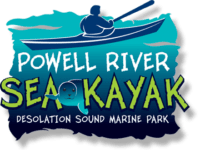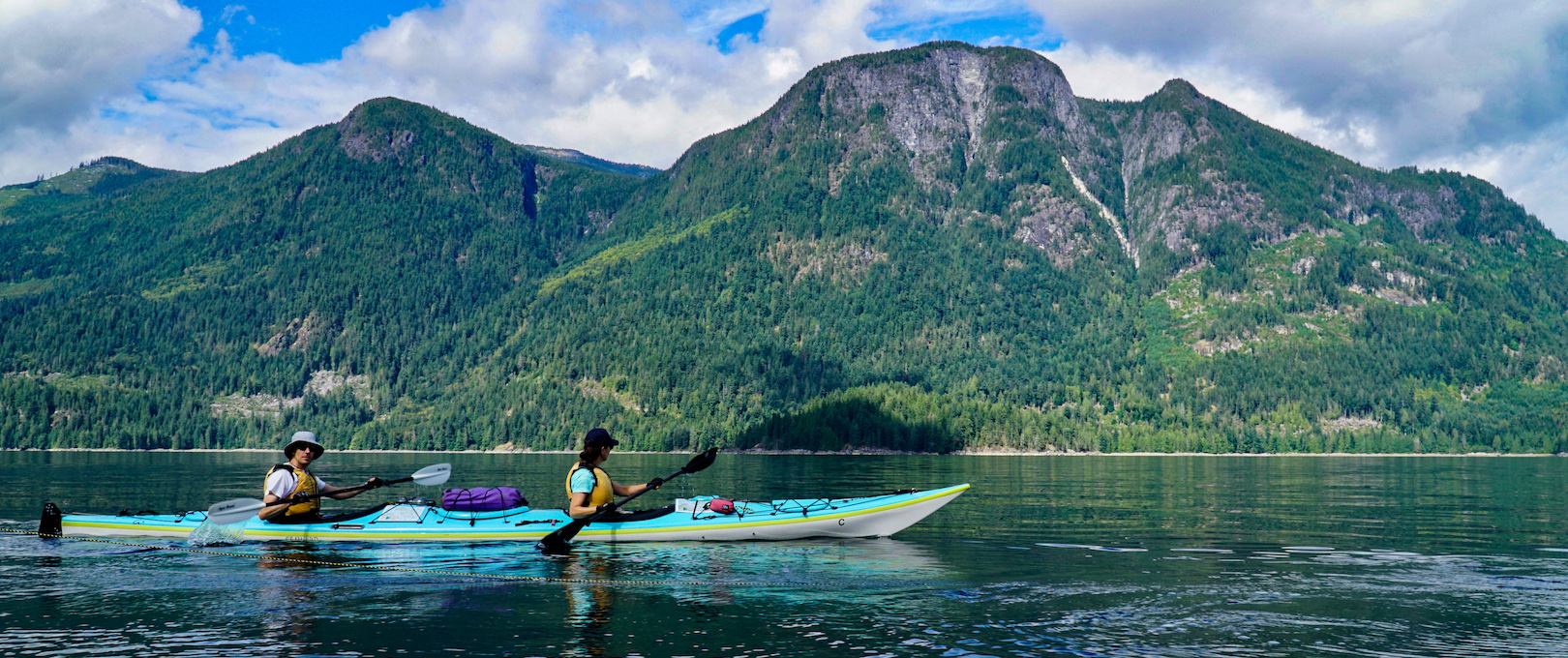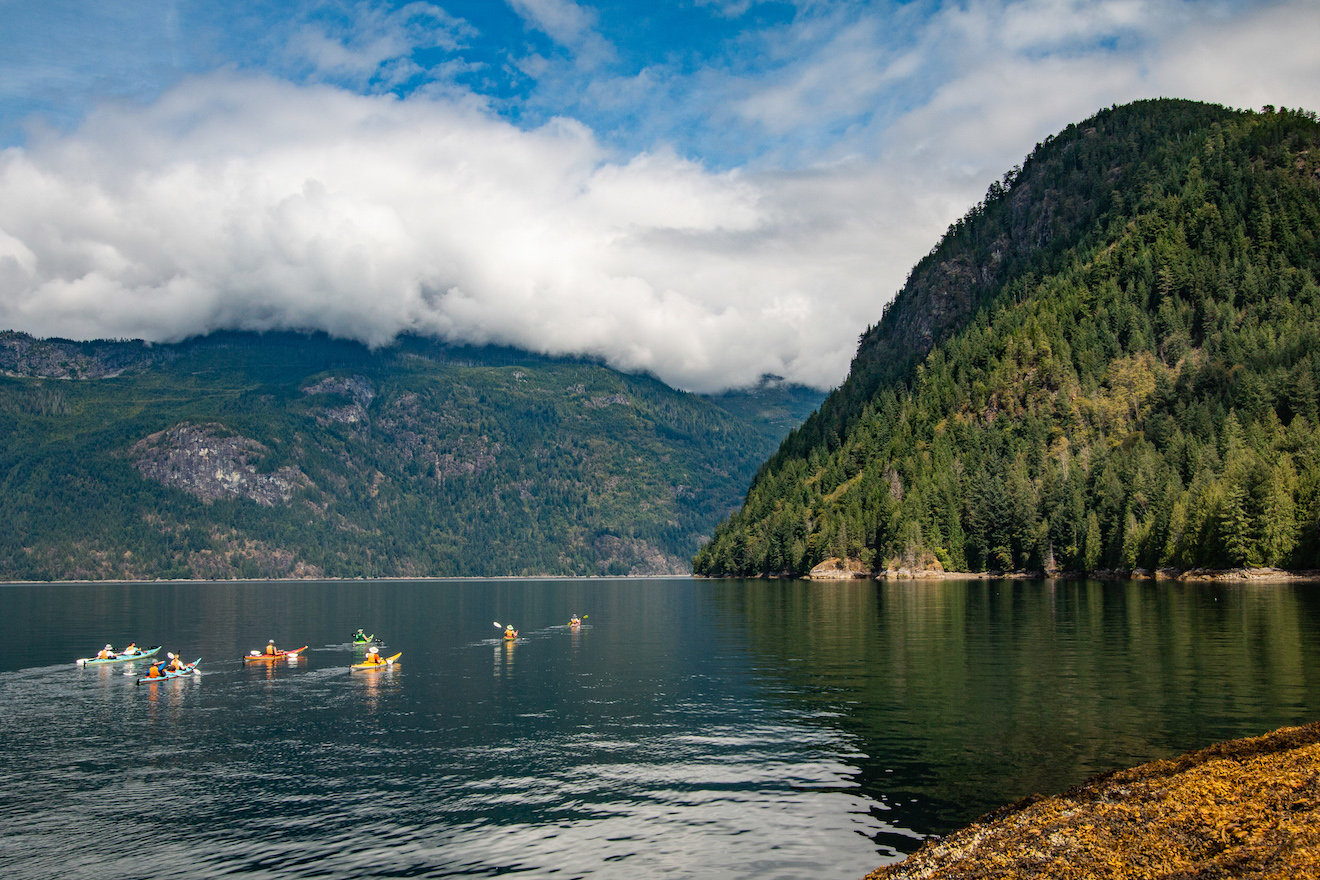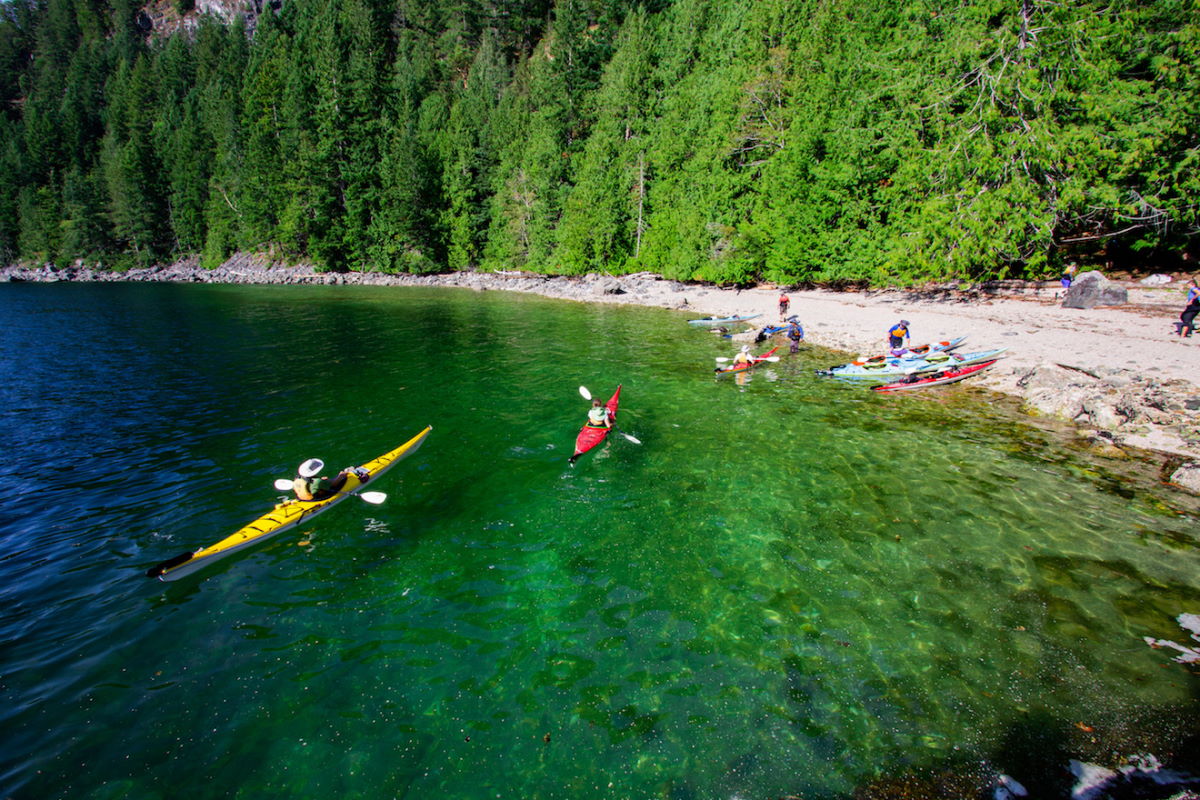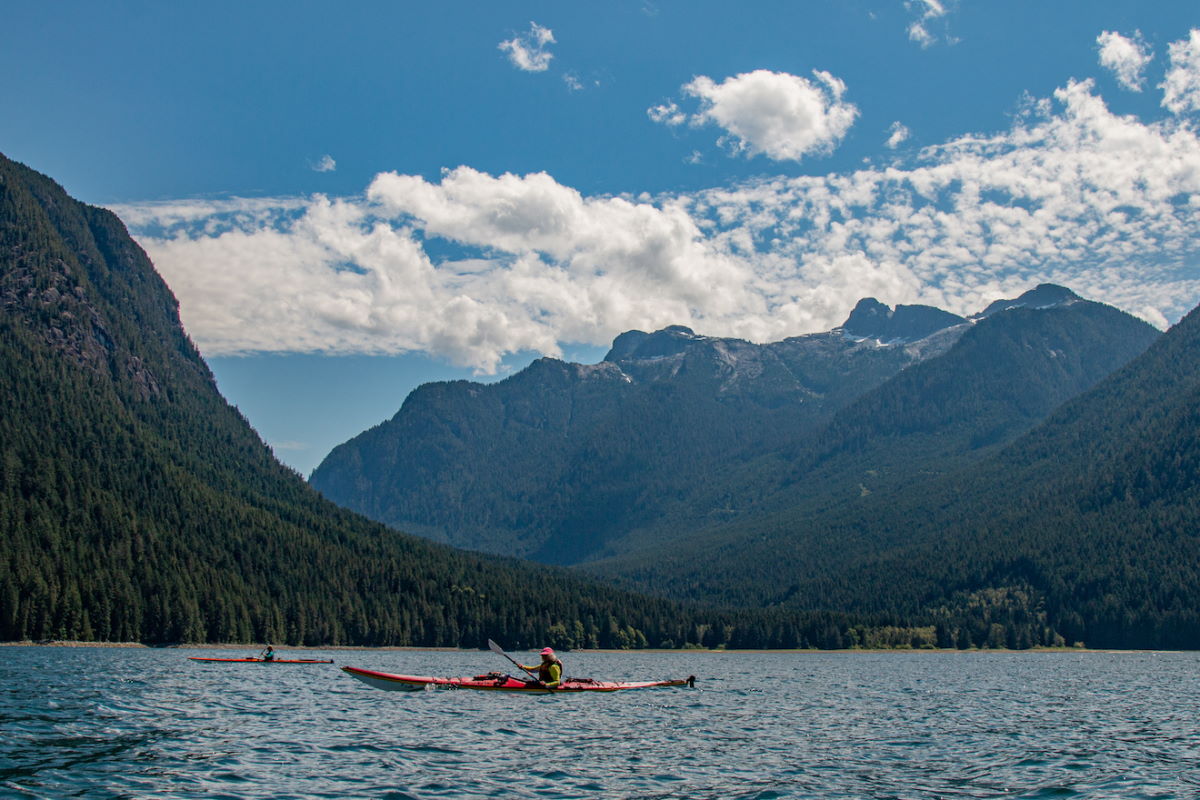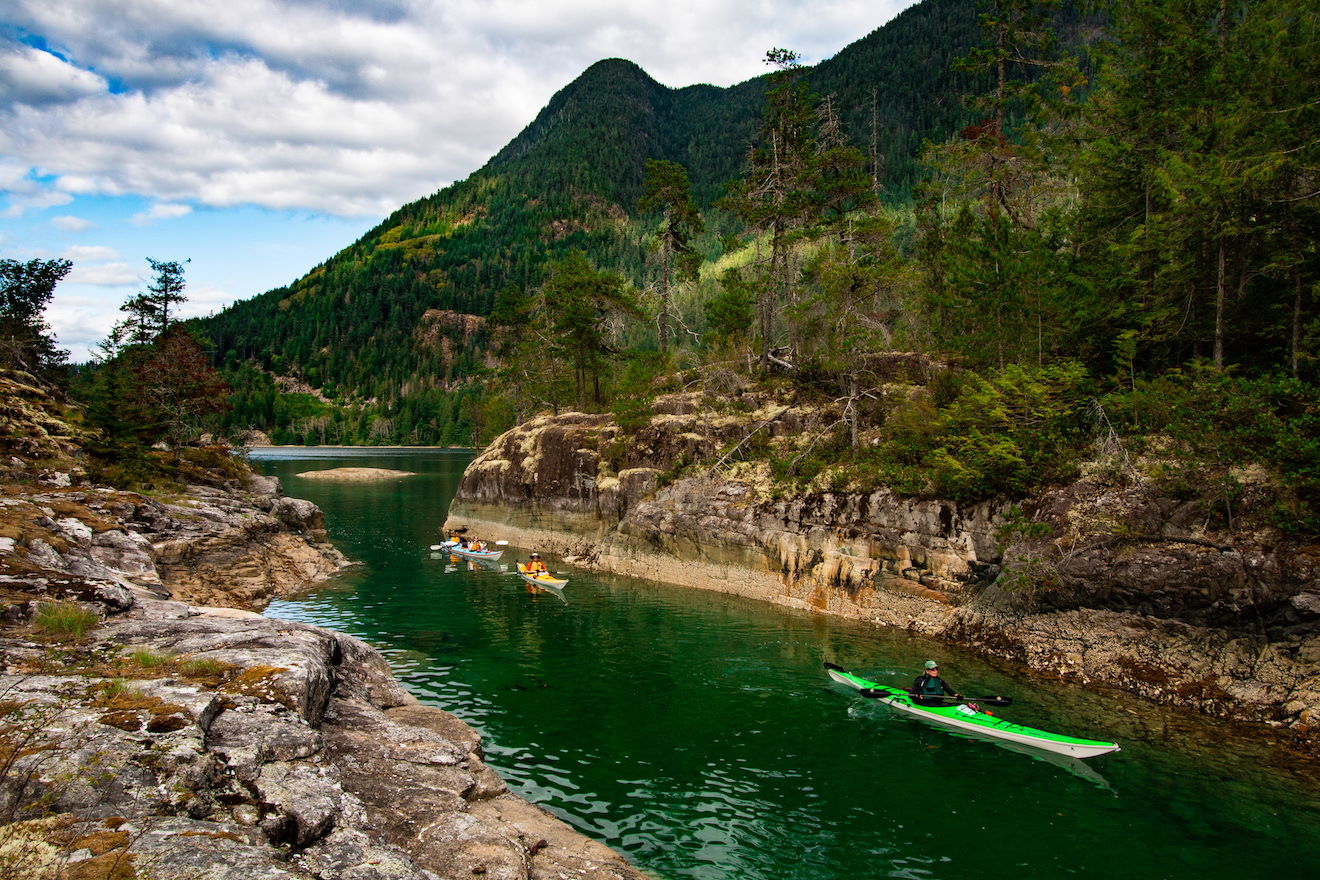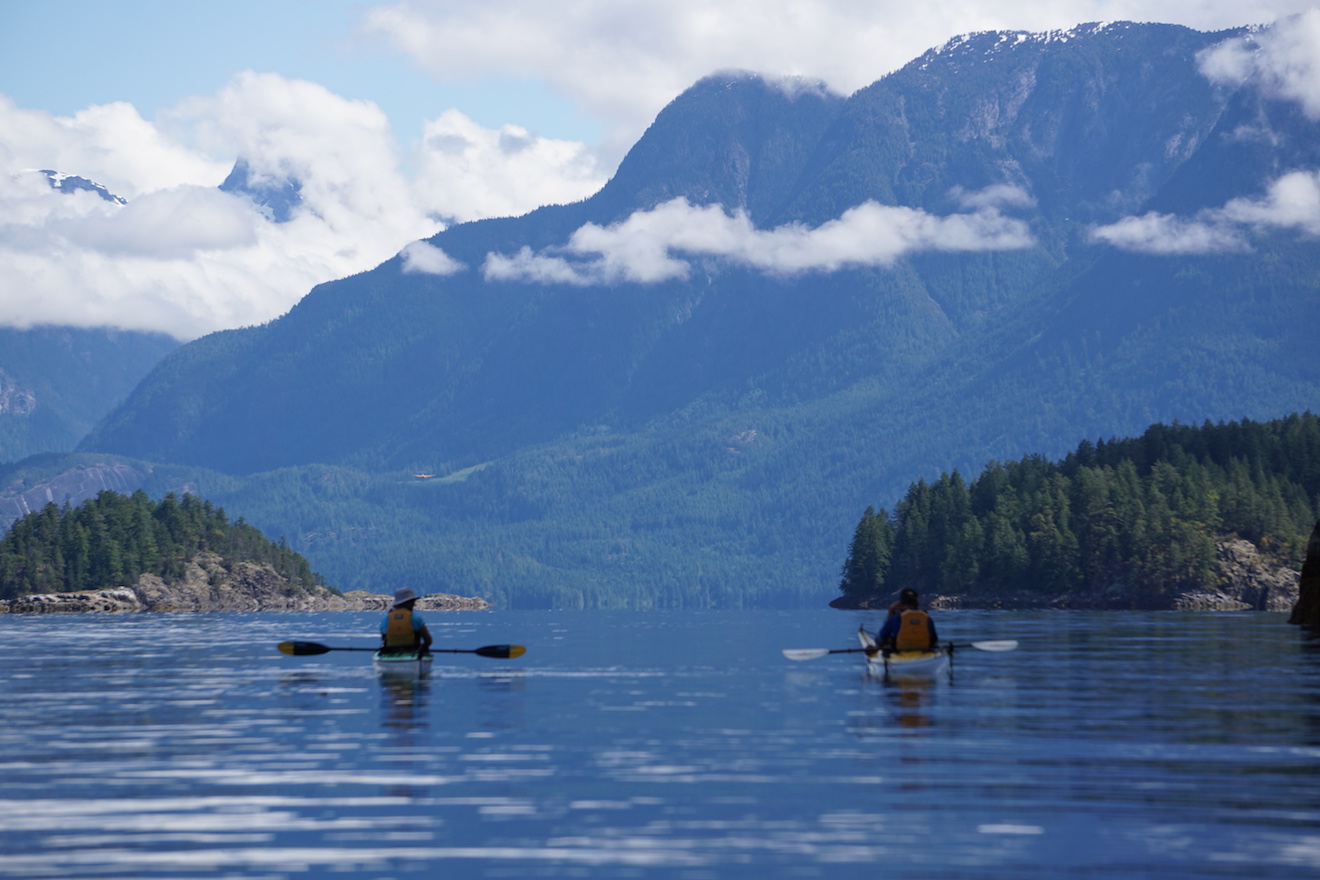Returning to Waddington Channel, the feeling shifts more and more from a relaxing island-hopping vacation to expedition-style kayaking, as you perceive yourself heading deeper into the wilderness. At this point, the cliffs of both East and West Redonda are high and steep. Yet amidst this imposing landscape, an oasis appears…
Walsh Cove Marine Park is tucked neatly into a well-protected nook at the top end of West Redonda Island. Three small islets sit below the cliffs of both West and East Redonda Islands, which come as close as 120 metres at their closest point. With great swimming during the heat of the day, the views south back to the mountains of East Redonda are picture perfect here.
Butler Point, immediately north of your island camp, offer mysterious and fascinating glimpses into the past. More than a dozen pictographs – Native rock art dating back to a time before Europeans discovered these lands – can be found in various places among the cliffs. Images of marine animals and human forms are plainly visible, while others provide more cryptic clues to the nature of life here far in the distant past.
To the north, the mountains are silently beckoning. The channel narrows as it comes to an end. The water, for so long deep and dark, is suddenly luminous with turquoise blues and emerald greens as the glacial fed water of Toba Inlet, just beyond the passage, mixes with the open ocean.
